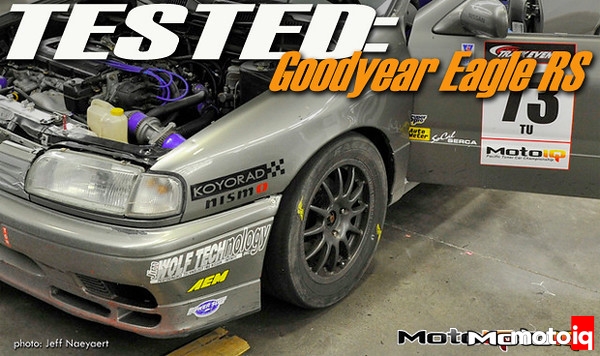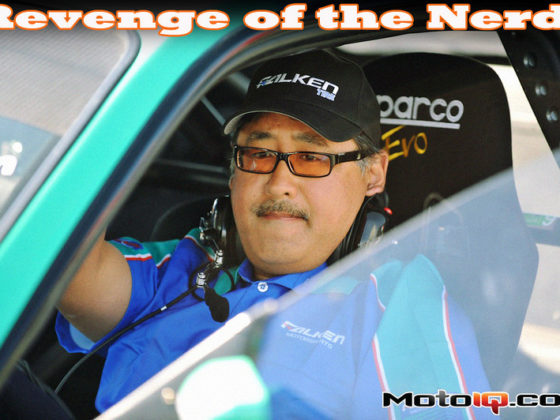
TESTED: Goodyear Eagle RS Competition Tire
By Steve Rockwood
If there’s one thing that racing has taught me, it’s drive smoother. Why? Fast lap times, sure, but that’s not it. Consistency? Close, but no cigar. Less likely to crash? Getting real warm. Tires last longer? Bingo! The most important part of a race car, and likely the largest expense you’ll have in any given racing weekend (excepting my third point: crashing), is tires, and I want to make those expensive gumballs last as long as possible without going slow. In the never ending game of rubberized trade-offs, we installed a set of Goodyear Eagle RS DOT R-compound tires on Project G20 Racecar.
 |
| Goodyear’s Eagle RS, size 225-45-15 in the RC compound |
Goodyear got back into the DOT racing tire game just in time for the inaugural MotoIQ Pacific Tuner Car Championship (MPTCC) race, and the first team to have experience with the tire was the APD team with their Acura TSX. After talking to Jonathan Donner about the tires, how well they performed, how long they were lasting (bonus!), and how our cars had very similar issues (namely, lack of negative camber), then watching Edik Stepanyan completely demolish the entire field in Round 4 of the MPTCC at Willow Springs, we decided to try a set for ourselves.
 |
| Edik Stepanyan’s Acura Integra on Goodyear Eagle RS tires |
 |
| The APD Acura TSX on Goodyear Eagle RS tires |
Now, with any R compound tire, and really anything made of rubber, sacrifice is the name of the game, and the Eagle RSs were no exception. The problem lies in that tire construction can be optimized for a very specific purpose, and be really good at it, or it can be optimized for a number of purposes and not be very good at any of them. An all-season tire, for example, has the unenviable task of working in the snow, the rain, the heat of summer, the dead of winter, and last a reasonably long time while being generally unobtrusive and hopefully grip well. As a result, it isn’t very good at anything, but will adequately do the job of tires through all of these conditions.
The opposite end of the spectrum in the DOT world would be the ultra-soft autocross compound racing tire. Barely any tread means rain and snow are out of the question. However, the autocross-specific compound isn’t very amenable to multiple heat cycles, and isn’t going to be happy with your 10 lap, three-way battle for 1st either. This is why almost every DOT racing tire worth its price tag will have a selection of compounds for you to choose from. Some, like Goodyear and Hoosier, make it easy (AC or RC, A6 or R6, respectively), while others, like Hankook, are less obvious (C31, C51, or C71). Since we certainly weren’t dodging cones in a parking lot, we chose the RC compound, sized 225-45-15, which brings us to our next dilemma.



